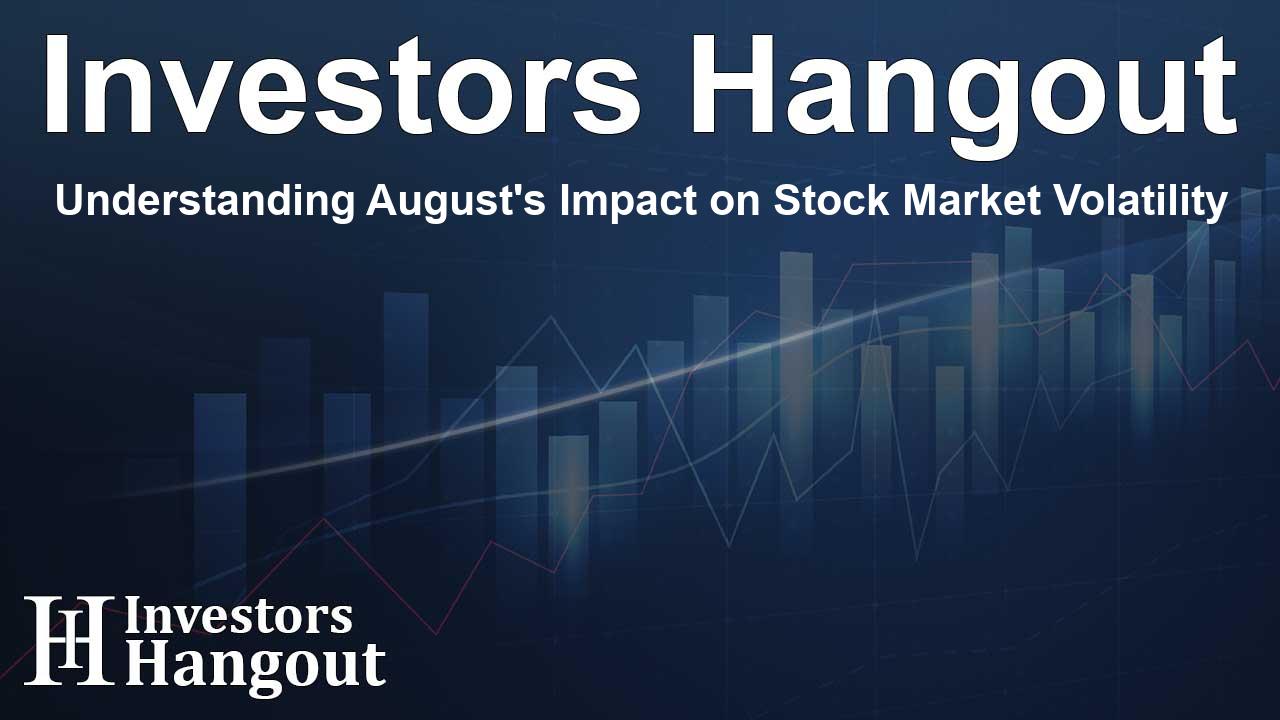Understanding August's Impact on Stock Market Volatility

Stock Market Volatility in August
As we step into August, it's essential to analyze the historical trends that shape stock market performance during this month. The S&P 500 Index has shown a notable performance in recent July months, marking an increase of 2.2%, reflecting a healthy streak of gains that extend over three consecutive months. This consistent upward pressure from buyers has notably reduced volatility, allowing daily price movements to remain within a contained 1% range.
Historical Trends of the S&P 500
When diving into historical data, August tends to signal a potential shift in volatility. If we look back to 1950, the general trend for the S&P 500 reveals that while the index often hovers around a neutral response, those months where the S&P 500 closes with losses present quite a different story. Typically, the average loss recorded during such months stands at 3.8%. In stark contrast, months showcasing gains reflect an average uptick of 3.2%. Clearly, this month is a critical period for investors.
The Role of the VIX in August
The CBOE Volatility Index, commonly known as the VIX, acts as a significant gauge of market sentiment, often dubbed the 'fear gauge' for its sensitivity to investor sentiment. Historically, the VIX tends to experience an upward trend during August. Analyzing data from 1990 onwards shows an average gain of 8.4% for the VIX during this period, further emphasizing the heightened market reactions typical of August. In fact, approximately 57% of the months have reported positive close rates, which positions August on par with October for the highest probability of positive returns throughout the year.
Implications for Investors and Traders
For both traders and investors, understanding these seasonal patterns is paramount. Market fluctuations create both risk and opportunity, and a well-informed approach can make a significant difference in trading strategies. By being cognizant of historical performance indicators, one can tailor their investment strategies for better outcomes, especially considering the potential increase in volatility.
Why Monitor Seasonal Trends?
Monitoring these seasonal trends allows for proactive adjustments in investment strategies. August’s mixed results can serve as warnings to be cautious. The S&P 500’s historical resilience against losses means traders should weigh their options carefully and prepare for potential dips in the market.
Additional Insights on Market Sentiment
As traders brace for the August effect, it’s prudent to keep an eye on broader market indicators and economic reports that may also influence market sentiment. For example, analyzing earnings reports from major corporations will provide valuable insights into overall market health and potential volatility shifts.
Preparing for Market Movements
With the knowledge of past trends, investors can diversify their approach during this time. Whether considering options trading, hedging strategies, or simply rebalancing portfolios, being prepared for the unexpected can often lead to better financial outcomes during this historically unpredictable month.
Engaging with the Market
Ultimately, engaging with the market through an informed and well-prepared strategy will enhance the chances of capturing opportunities while minimizing risks. The S&P 500 and VIX provide critical insights into where to focus energies during this vital month.
Frequently Asked Questions
What is the significance of the CBOE Volatility Index (VIX)?
The VIX measures market expectations of volatility, reflecting investor sentiment. A higher VIX indicates greater expected volatility.
How does August generally affect stock market performance?
Historically, August can lead to increased volatility, with potential for both losses and gains depending on market conditions.
Why is understanding seasonal trends important for investors?
Seasonal trends can influence market behaviors, helping investors formulate strategies to mitigate risks and seize opportunities.
Is it advisable to trade actively in August?
While opportunities arise, investors should remain cautious and consider historical volatility patterns before engaging heavily in trading.
What can past performance indicate about future trends?
While past performance isn't a guarantee, it provides invaluable insights into possible market behaviors and patterns, essential for strategic planning.
About The Author
Contact Lucas Young privately here. Or send an email with ATTN: Lucas Young as the subject to contact@investorshangout.com.
About Investors Hangout
Investors Hangout is a leading online stock forum for financial discussion and learning, offering a wide range of free tools and resources. It draws in traders of all levels, who exchange market knowledge, investigate trading tactics, and keep an eye on industry developments in real time. Featuring financial articles, stock message boards, quotes, charts, company profiles, and live news updates. Through cooperative learning and a wealth of informational resources, it helps users from novices creating their first portfolios to experts honing their techniques. Join Investors Hangout today: https://investorshangout.com/
The content of this article is based on factual, publicly available information and does not represent legal, financial, or investment advice. Investors Hangout does not offer financial advice, and the author is not a licensed financial advisor. Consult a qualified advisor before making any financial or investment decisions based on this article. This article should not be considered advice to purchase, sell, or hold any securities or other investments. If any of the material provided here is inaccurate, please contact us for corrections.
